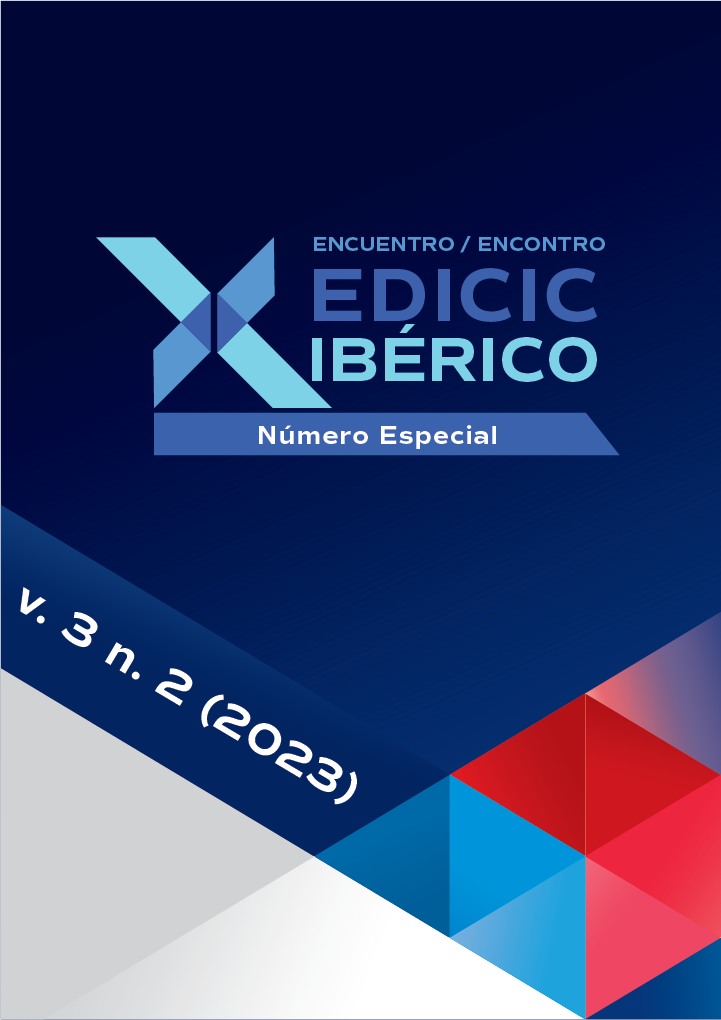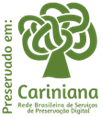Organización de la información e inteligencia artificial: la organización textual propuesta por ChatGPT
DOI:
https://doi.org/10.62758/re.v3i2.276Palabras clave:
Inteligencia Artificial, ChatGPT, Cuadros Discursivos, Recuperación de Información, Análisis de EnunciadosResumen
La Ciencia de la Información se considera una ciencia interdisciplinaria, lo que significa que contribuye y recibe contribuciones de diversas áreas, siendo una de ellas la Ciencia de la Computación. Dentro de los campos de estudio de la Ciencia de la Computación, la Inteligencia Artificial está destacada actualmente, dado que el interés en estudios relacionados con la inteligencia de las máquinas ha aumentado significativamente, especialmente con la aparición de herramientas generativas como ChatGPT. Teniendo en cuenta que estas herramientas son capaces de imitar algunas funciones cognitivas de los seres humanos, se pueden explorar sus aplicaciones en la organización de la información. El objetivo de esta investigación es reflexionar sobre las posibilidades de organización de la información derivadas del acceso a ChatGPT, explorando la configuración del texto y cómo el chatbot compone los objetos informativos en sus respuestas. Dado lo expuesto, la inteligencia artificial tiene un gran potencial para ser una herramienta de apoyo en la organización de la información; sin embargo, ChatGPT tiene algunas limitaciones que deben ser estudiadas y desarrolladas para ofrecer mejores posibilidades de aplicación.
Citas
Bakhtin, M. (2011). Estética da criação verbal. Trad. Paulo Bezerra. São Paulo: Editora WMF Martins Fontes.
Bakhtin, M. (2016). Os gêneros do discurso. Trad. Paulo Bezerra. São Paulo: Editora 34.
Brookshear, J. G. (2008). Inteligência Artificial. In. Brookshear, J. G. Ciência da Computação: uma visão abrangente. (7. ed., pp. 368-370). Porto Alegre: Bookman.
Charaudeau, P. & Maingueneau, D. (2020). Dicionário da análise do discurso. Trad. Fabiana Komesu. 3ª ed. São Paulo: Contexto.
ChatGPT (2023, August 3). O que é ChatGPT. https://chatgpt.com.br/o-que-e-chatgpt/.
Ducrot, O. (2020). O dizer e o dito. Trad. Eduardo Guimarães. Campinas: Pontes Editores.
Feltes, H. P. M. (2007). Semântica Cognitiva: ilhas, pontes e teias. Porto Alegre: EDIPUCRS.
Fontoura, R. V., & Villalobos, A. P. O. (2023). Interfaces entre a Ciência da Informação e Inteligência Artificial. Ciência da Informação em Revista, 9(1/3), 1-15. https://doi.org/10.28998/cirev.2022v9n1/3f. DOI: https://doi.org/10.28998/cirev.2022v9n1/3f
Franco, C. R. (2017). Inteligência artificial. Indaial: UNIASSELVI.
Kleiman, A. (2002). Texto e leitor: Aspectos cognitivos da leitura. 8ª ed. Campinas: Pontes.
Koch, I. G. V.; Travaglia, L. C. (2011). Texto e coerência. 13ª ed. São Paulo: Cortez.
Koch, I. G. V. (2018). O texto e a construção dos sentidos. 10ª ed. São Paulo: Contexto.
Lakoff, G. (1998). Women, Fire and Dangerous Things: What categories reveal about the mind. Chicago: The University of Chicago Press.
Luger, G. F. (2013). Inteligência Artificial: raízes e escopo. In. LUGER, George F. Inteligência artificial. (6. ed., pp. 1-25) São Paulo, SP: Pearson. E-book. Disponível em: https://plataforma.bvirtual.com.br.
Oliveira, R. F. (2018). Fundamentos da inteligência artificial. In. Oliveira, R. F. Inteligência Artificial (pp. 7-44). Londrina: Editora e Distribuidora Educacional S.A.
OpenAI (2022, November 30). Introducing ChatGPT. https://openai.com/blog/chatgpt#OpenAI
Pêcheux, M. (1997) Semântica e discurso: uma crítica à afirmação do óbvio. Trad. Eni Pulcinelli Orlandi et al. Campinas: Editora da Unicamp.
Russel, S., & Norvig, P. (2013). Inteligência Artificial. (7a ed.). Rio de Janeiro: Elsevier.
Van Dijk, T. A. (2019) Cognição, discurso e interação. 7ª ed. São Paulo: Contexto.
Van Dijk, T. A. (2020). Discurso e contexto: uma abordagem sociocognitiva. Trad. Rodolfo Ilari. São Paulo: Contexto.
Descargas
Publicado
Cómo citar
Número
Sección
Licencia
Derechos de autor 2023 Revista EDICIC

Esta obra está bajo una licencia internacional Creative Commons Atribución 4.0.
La Asociación posee los derechos de autor de los textos que publica y adopta la licencia Creative Commons, CC BY 4.0 DEED Atribución 4.0 Internacional (https://creativecommons.org/
Usted es libre de:
- Compartir: copiar y redistribuir el material en cualquier medio o formato para cualquier propósito, incluso comercialmente.
- Adaptar: remezclar, transformar y construir a partir del material para cualquier propósito, incluso comercialmente.






